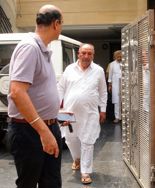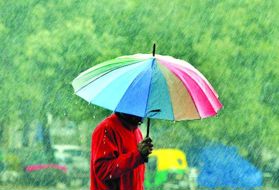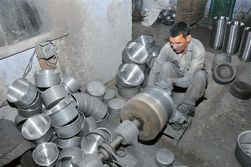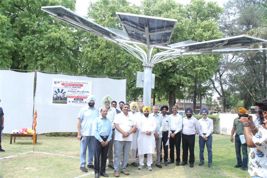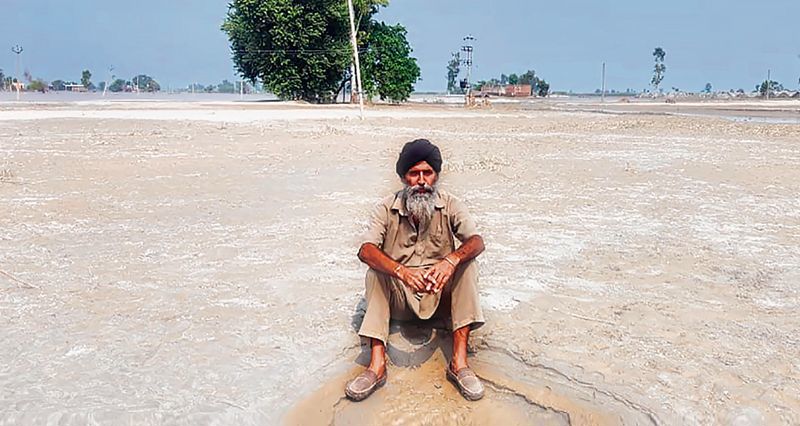
A few years ago, the Punjab Government asked the Centre for International Projects Trust to conduct a survey on the usage of groundwater via tubewells in each block of the state. - File photo
Ruchika M Khanna
Chandigarh, June 19
A few years ago, the Punjab Government asked the Centre for International Projects Trust to conduct a survey on the usage of groundwater via tubewells in each block of the state. One village in a block and 25 operational landholdings in each of these villages were chosen for the study. The data on tubewell connections that came up in the study was an eye-opener… but maybe only for the officials, and not for the political class that celebrates free power subsidy to farmers.
“The survey on 3,500 odd farmers revealed that for every 10 landholdings of up to one hectare each, there are just six tubewells. For landholdings of 1-2 hectare, nine in 10 farms had a tubewell. For 2-4 hectare farms, there were 12 tubewells for every 10 farms; 16 tubewells for 10 farms of 4-10 hectare; and 23 tubewells for every 10 farms, which are over 10 hectare in area,” revealed Dr BS Sidhu, the then Agriculture Commissioner of Punjab.
Tubewell connections
14.50 lakh total tubewell connections in the state
10,000 farmers have four to nine tubewells
29,322 farmers have three and 1.42L farmers have 2 connections
Inequitable Subsidy distribution
Rs 2,500 per hectare at places like Pathankot, where tubewell connections are sparse as compared to Malwa region
Rs 25,000 per hectare in Sangrur and Barnala areas of the Malwa belt
Deeper aquifer, more powerful pumps
- The depletion of water table has led to increase in the number of submersible electric motors installed in the fields; the number has gone up from 6.19 lakh in 2009 to 9.79 lakh in 2017
- Over 90 per cent farmers have installed submersible motors now and this has led to an ever-increasing number of high BHP motors for groundwater extraction
- The number of motors with more than 10 BHP increased from 2.74 lakh (24% of the total) in 2010 to 4.58 lakh (34% of the total) in 2020, says economist Ranjit Singh Ghuman
What experts say
Over 81 per cent of the subsidy is availed by medium and large farmers (having over 10 acres of land). This should go only to the small and marginal farmers. Ranjit Singh Ghuman, Economist
Though it is the need of the hour to give subsidy to only economically vulnerable farmers, the political class fears its repercussions (as regards their vote bank). Kesar Singh Bhangu, Economist
The study also revealed inequitable distribution of power subsidy in the state. At places like Pathankot, where tubewell connections are sparse as compared to the Malwa region, the power subsidy worked out to be Rs 2,500 per hectare. Comparatively, in Sangrur and Barnala of the Malwa region, it worked out to be Rs 25,000 per hectare.
The study revealed grossly untargetted power subsidy, which now claims Rs 9,330 crore from the state’s depleting coffers. The most vulnerable sections in the farming community, those who have the smallest landholdings, are clearly not getting the benefit. It may be mentioned that over 90 per cent of farmer suicides because of indebtedness are from amongst small and marginal farmers. And those who are getting the benefit are squandering away the power by flooding their empty fields now… much before the paddy has been transplanted. All this, while the domestic, industrial and commercial consumers are braving unscheduled and long power cuts. Information gathered by The Tribune reveals that over 4,500 MW of the over 16,000 MW of power required in the state today is being used for running pumps in agricultural fields.
Another study by eminent economist Ranjit Singh Ghuman in 2017 revealed that only 6.6 per cent of tubewells are installed by marginal farmers (who own less than 2.5 acres) and 11.88 per cent are with small farmers (having 2.5-5 acres). The operational landholding of these farmers are 34.19 per cent. “Over 81 per cent of the subsidy is availed by medium and large farmers (having over 10 acres of land). This should go only to the small and marginal farmers,” said the economist.
It is not that the political class in the state is oblivious to the fact that the power subsidy is “untargeted”. But they find themselves unable to “take the bull by its horns” and revisit the policy, which was started 27 years ago. When it was started, the annual power subsidy bill of the state was Rs 385 crore, which has zoomed to (projected) Rs 9,330 crore in 2024-25.
It was only last year that the Public Accounts Committee of the Punjab Vidhan Sabha, then headed by Congress MLA Tript Rajinder Singh Bajwa, held a discussion on withdrawing free power subsidy to large farmers. Some members of the PAC had even recommended that the government should start metering the agriculture pumpsets. But these discussions have not found much favour with the policymakers, probably fearing the political repercussions of withdrawing a privilege allowed to farmers, who form a big vote bank.
“Though it is the need of the hour to give subsidy to only economically vulnerable farmers,” says another eminent economist Kesar Singh Bhangu, “the political class fears its repercussions, especially as the Congress government had lost the 2007 poll mainly because it had withdrawn free power to farmers during their rule.
Join Whatsapp Channel of The Tribune for latest updates.






















